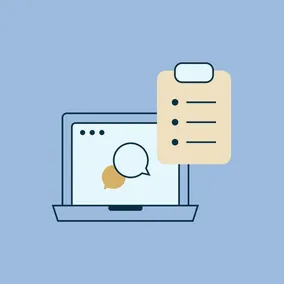Your Website Transition Checklist

Having access to the right information and accounts will make your website transition as smooth as possible. But what does that even mean? Here's your checklist for navigating a website transition.
When onboarding a new partner to redesign your website, take over maintenance, or rescue a project going sideways, you'll need to carefully transition access to a variety of critical systems and tools. And if you're navigating a contentious relationship or onboarding into a new organization without documentation, you might not know where to start.
Does that sound scary? It doesn't have to be.
Here's a comprehensive checklist to ensure that you retain full control of your website and avoid any potential hiccups during a transition.
- Codebase access. Ensure you have ownership or administrative access to the existing codebase or code repository. Popular platforms like Bitbucket and GitHub are often used for this purpose.
- Content Management System access. Ensure you have the highest level of access (super admin) for your Content Management System (CMS).
- Hosting information and access. Gather all hosting information and ensure you have access to the account that owns the workspace. This is crucial to prevent unauthorized updates or changes to your site. For hosted platforms, you’ll need Owner access, not just Administrator access.
- Additional services information and access. This might include your domain registrar (e.g., GoDaddy), DNS settings, email services, your content delivery network (CDN), if applicable. This could also include any third-party services that are integrated with your website. Common examples might include: Algolia, Hubspot, Stripe, etc.
- Analytics and Data. Make sure you have access to all analytics tools used to monitor your website traffic and user behavior. This might include both old Google Universal Analytics data and current GA4 data, Google Tag Manager, or any other analytics services used on your website (e.g., Mixpanel, Hotjar, Adobe Analytics, etc.).
- Backups. Secure a full backup of your site, including the file system. Plugins like UpdraftPlus for WordPress can be very helpful for this process. Also, ensure you have backups of shared files, such as those in Google Drive, Box, or Dropbox.
- Design Assets. Retain copies of raw design assets (e.g., Figma files). We always transfer ownership of Figma files to our client teams to ensure they have the ability to extend the design system in the future.
- Licenses. Make sure you own any required licenses, such as font/photo licenses, CMS licenses, API keys, or premium plugins. We insist that our client teams purchase any required licenses/subscriptions using their corporate information so we’re never blocking access to those critical resources.
Transitioning website partners can be a smooth process with foresight and preparation. While ideally there would never be gaps in access to these critical resources and services, by following this checklist, you can ensure that you’re not missing anything when offboarding old partners or getting your bearings with a new team or organization.
Do you need help figuring out how this checklist might apply to your situation? Be in touch, and we’d be happy to discuss your current status and suggest next steps for your website transition.
